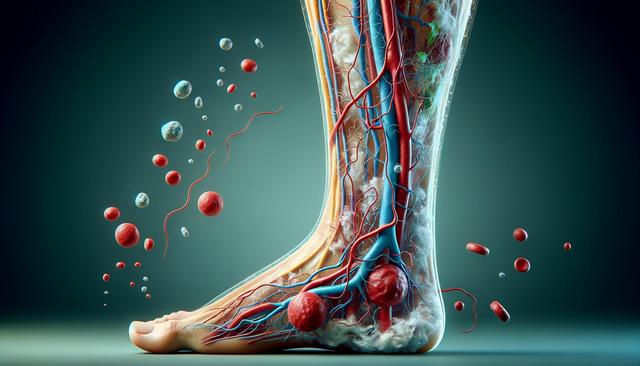Understanding Treatments for Blood Clots
Understanding Deep Vein Thrombosis (DVT)
Deep vein thrombosis (DVT) is a condition where a blood clot forms in a deep vein, usually in the leg. This can lead to serious complications if not treated promptly. The symptoms of blood clots in the leg can include pain, swelling, and skin discoloration. In some cases, light spots on the skin may also appear due to skin pigmentation disorders. It’s important to recognize these symptoms early to seek appropriate medical intervention. Blood thinners for blood clots in leg are commonly prescribed to prevent the clot from growing and to reduce the risk of further complications.

Effective Treatments for DVT
Medical treatments for DVT often include the use of anti clotting meds. These medicines to prevent blood clots are crucial in managing the condition. Blood thinners are typically the first line of treatment, and they work by preventing the clot from enlarging and reducing the risk of new clots forming. In some cases, doctors may also use procedures to remove blood clots from legs, such as catheter-directed thrombolysis, which involves delivering medication directly to the clot through a catheter.
Natural Methods to Support Blood Clot Treatment
If you’re wondering how to clear blood clots naturally, there are several lifestyle changes and natural remedies that can support medical treatments. Maintaining a healthy diet, staying hydrated, and exercising regularly can improve circulation and reduce the risk of clot formation. Supplements that address vitamin deficiency, like those for small white spots on skin, can also be beneficial. However, it’s essential to consult with a healthcare provider before trying any natural remedies to ensure they are safe and effective for your specific condition.
Addressing Skin Changes Associated with DVT
Skin changes, such as skin discoloration and light spots, can occur with DVT. These changes may be due to vitamin deficiency small white spots on skin or other skin pigmentation disorders. In some cases, treatments like tranexamic acid for melasma may be recommended to help improve skin appearance. While addressing these skin issues is important, the primary focus should remain on managing the blood clot itself to prevent further complications.
Managing Blood Clots in the Brain
In some cases, blood clots can occur in the brain, leading to severe health issues. Knowing how to get rid of a blood clot in brain and how to remove a blood clot in the brain is critical for preventing strokes and other complications. Treatment options may include medications to dissolve the clot or surgical procedures to remove it. Just like with DVT, timely intervention is crucial. Anti clotting meds and blood thinners are often part of the treatment plan to manage these clots effectively.
